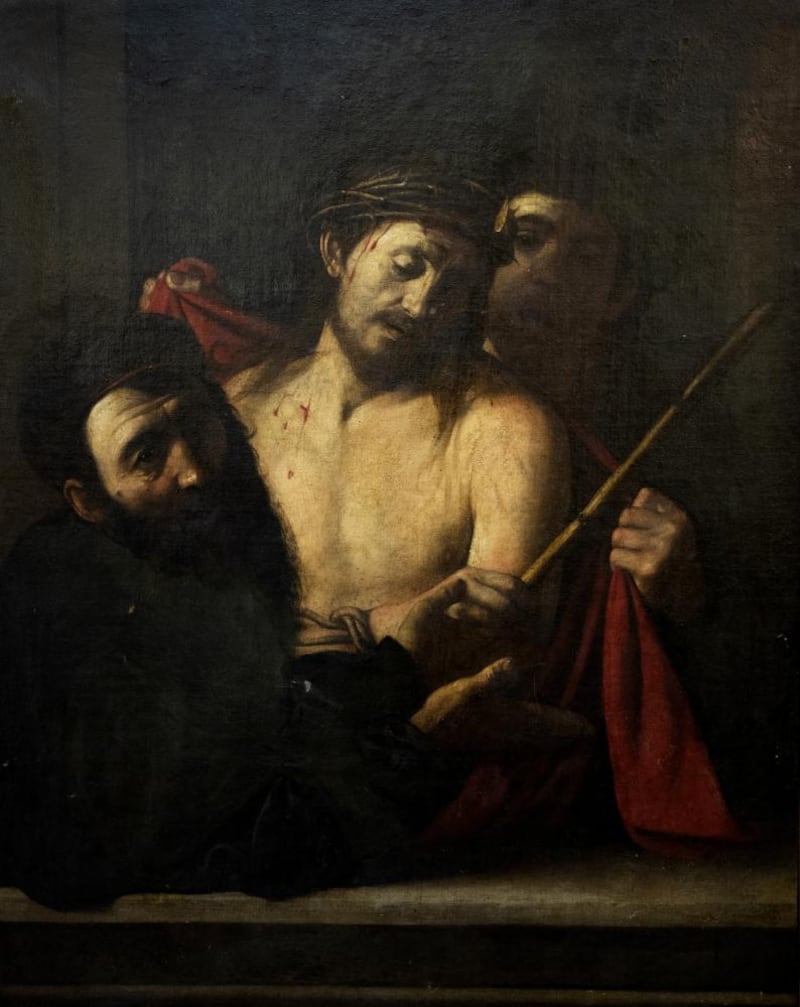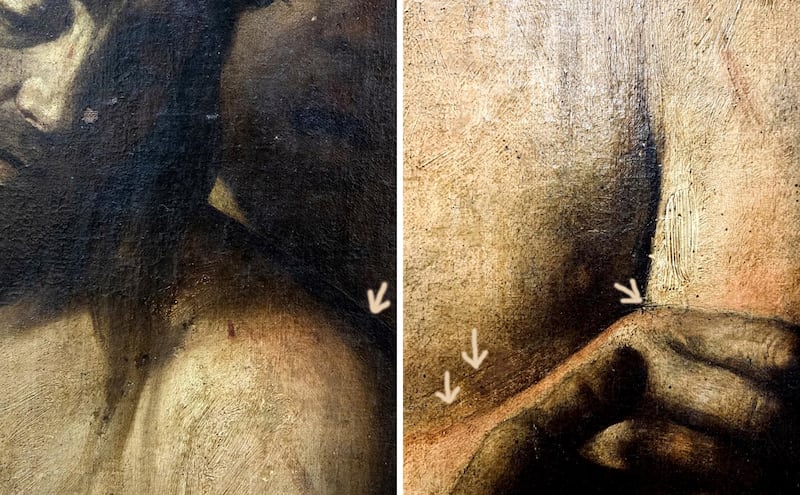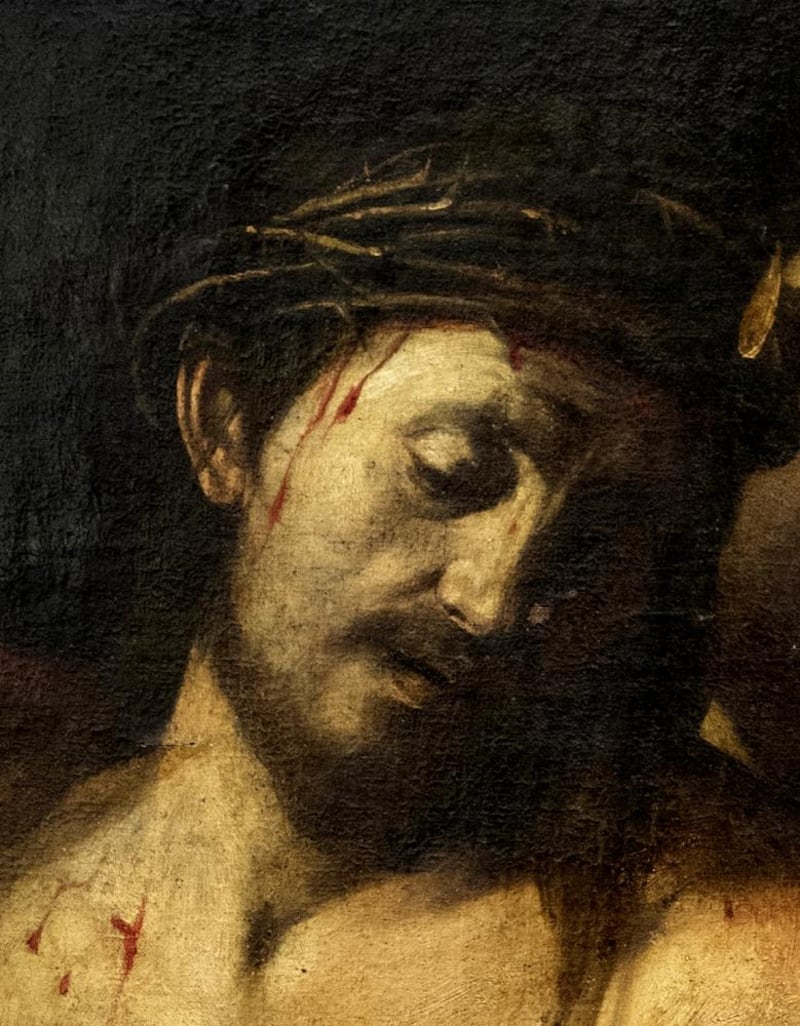It took all of six minutes for Massimo Pulini to realise that the small oil painting due to go under the hammer in Madrid earlier this month with a guide price of €1,500 could be worth millions.
At 9.48pm on March 24th, Pulini, a 63-year-old professor at Bologna Fine Arts Academy, received an email request for an evaluation. Sent by an antiques dealer and friend of Pulini’s, it included a photo of a luminous oil painting of the scourged Christ.
At 9.54pm, Pulini sent a reply that would echo across the art world: “Damn! This is a Caravaggio! Where the hell did you find it?”
Word soon spread that what was thought to have been a picture attributed to a 17th-century Spanish artist could instead have been painted by the great Italian master Michelangelo Merisi da Caravaggio.

Within two weeks, Spain’s culture ministry, acting on advice from Madrid’s Prado museum, held an emergency meeting to impose an export ban. The painting was pulled from auction.
Pulini, a painter himself as well as an authoritative art historian, told us about his identification of the painting and the ultimately doomed scramble to bring it back to Italy.
The email had come from Giancarlo Ciaroni, the owner of the prestigious Altomani Gallery, in Milan, and one of Italy’s best-known fine-art dealers, who in turn had been passed the photo by an art dealer in the southern Italian region of Basilicata, who had spotted it in the Madrid auction house’s online catalogue. “For years I’ve had friendly relations with hundreds of collectors and fine art dealers,” Pulini says.
“They send emails with photos of paintings, often without any text, as the request is implicit: establish a monetary value for the painting, or simply express what I think about it.”

The painting was attributed in the online catalogue to the 17th-century artist José de Ribera, son of a shoemaker and a notable follower of Caravaggio, but Pulini was convinced it was by Caravaggio himself.
“When I saw the painting I couldn’t believe my eyes,” he says. “The impact was so immediate that I instantly knew this was a Caravaggio. It was like meeting someone on the street who you haven’t seen for a long time. It’s difficult to explain what happens in certain moments when, in a millisecond, you have such an impression. It’s often a question of instinct.”
Ciaroni read Pulini’s reply and then phoned the Basilicata art dealer, informing him of his intention to take part in the auction in Madrid but making no mention of Caravaggio and requesting the matter be treated with the utmost discretion. His plea would prove hugely counterproductive: it raised the dealer’s suspicions and led him to send the photograph to Vittorio Sgarbi, a renowned Italian art critic, Forza Italia MP and close friend of the party leader, Silvio Berlusconi. Like Pulini, Sgarbi suspected the painting was a Caravaggio.
“I see it and immediately realise that the work is by Caravaggio,” Sgarbi told the press. “I also thought that with some funding I could bring it back to Italy.”
Undeterred, Ciaroni continued his pursuit of the painting and on March 26th sent his son to Madrid to view it personally. “We knew that if we wanted to bring it home, we’d have to broker a private deal with the owners before the painting went on auction,” he says. “We were certain that, once it was publicly displayed, other experts would realise it was a Caravaggio.”
A few days later, Ciaroni managed to get a meeting with the painting’s owners, three siblings who said they had inherited it from their father, in the office of the director of the Ansorena auction house in Madrid. Ciaroni hinted that he was willing to spend up to €500,000, still without sharing his conviction that it was a Caravaggio.
It was only when he was informed the family had already received two separate offers of €3 million that he realised the secret was out. The identity of the other bidders has not been disclosed.

The owners were now determined to get to the bottom of the mystery. Having first intended to auction the painting at a base price of €1,500, they now found themselves with three huge offers.
“They were confused. Almost frightened,” says Ciaroni. “I asked for 15 minutes of their time to clarify the situation and requested access to a photocopier so I could make handouts of a short essay that Pulini had begun to write immediately after receiving the image of the painting.”
Over 16 pages, Pulini identified the work as The Crowning with Thorns, painted by Caravaggio to enter a competition arranged by the aristocrat Massimo Massimi in 1605.
“I provided specific details that confirmed the painting was the work of Caravaggio, such as the inclination of Christ’s face, the light, the soldier’s face, which resembles that of the Young Sick Bacchus (Bacchino malato), one of his most celebrated works,” Pulini said. “I wrote the essay over a few days and sent it to Ciaroni.”
When Ciaroni returned with copies of Pulini’s 16-page essay in his hands, the auction house director took it and began reading aloud. The opening sentence, written in Italian, claimed the painting was a Caravaggio.
“The owners’ faces turned pale,” Ciaroni says. “They were speechless. More than overcome with emotion, they were confused. Their father had purchased the painting in the 1970s, and for 50 years they had no idea that hanging in their home was a Caravaggio that could easily be worth millions.”
In his essay, Pulini also tried to explain the series of events behind the painting’s journey from Italy to Spain. Caravaggio painted it in the summer of 1605. Less than a year later, on the evening of May 28th, 1606, he killed a man, Ranuccio Tomassoni, in an illegal duel, and he fled Rome to save himself from execution.

Pulini believes that The Crowning with Thorns fell victim to a common practice at the time known as the “condemnation of memory”, in which artists who had committed crimes had their paintings or frescoes destroyed or their names removed from the works they had created.
Massimi may have decided to get rid of the painting and sell it in Spain, Pulini suggests.
The other theory involves a close relative of Massimi, Cardinal Innocenzo Massimi, who in 1623 became the papal ambassador to Madrid and may have been the intermediary for the transfer of the painting to Spain.
Since the painting was pulled from auction and banned from export this month, it has been given additional protection by the Madrid regional government, which declared it an item of cultural interest. It cited a preliminary report by the Prado, noting there were “well-founded formal and documentary reasons for considering that this is probably an original work by Michelangelo Merisi di Caravaggio”. Its experts are waiting to examine the canvas for a final verdict.
Whatever happens, it is, as Pulini points out, a miracle that the painting has survived and remained intact. “It has never been restored in more than 400 years,” he says. “The restoration, which I hope will be done soon, will bring back to life the typical colours of Caravaggio and all its splendour.”
As for Ciaroni, he says that by the time he revealed his hand to the owners he had realised he could no longer buy it. “It was a thrilling adventure,” he says. “For a few hours, while on my way to Spain, I fantasised it was already mine.” – Guardian










